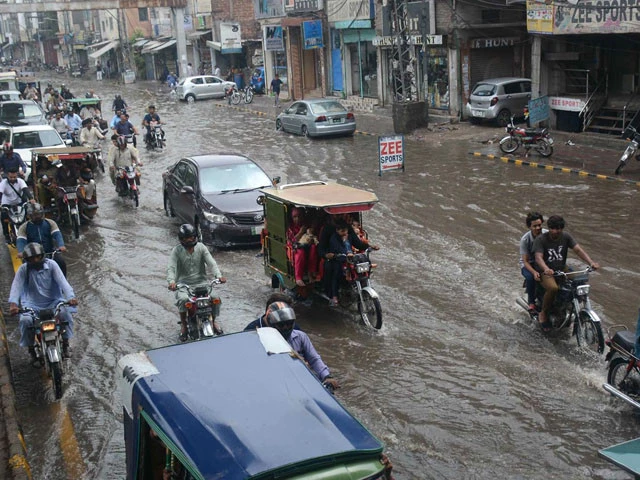The Pakistan Meteorological Department (PMD) has issued new warnings while a powerful monsoon system continues to strengthen, presenting the risk of sudden floods, landslides and urban flooding in large cities and vulnerable hilly regions.
The alert, published Tuesday morning, extends from districts in the north of Khyber Pakhtunkhwa in the south of Punjab and Balutch. It remains in force until July 17.
“The heavy to very heavy showers could trigger sudden floods in draws and streams, especially in Chitral, Dir, SWAT, MRIREE, KOHISTAN and RAWALPINI,” said the forecast agent Dawood Khan.
Authorities have reported the risk of landslides in mountainous regions such as Mirrier, Galliyat and Gilgit-Baltistan.
The PMD also warned of possible urban floods in cities like Islamabad, Lahore, Faisalabad and Multan.
The officials reported on Monday that thunderstorms and strong winds had caused at least nine deaths and 62 injuries in Punjab, while six additional deaths were recorded in Khyber-Pakhtunkhwa.
Strong winds associated with the storm system can damage trees, electric posts, vehicles, solar panels and standing crops, which has caused calls to public prudence.
The current fate of heavy rains is driven by a low pressure system on northeast of Rajasthan, with strong monsoon currents growing in the central and upper regions of Pakistan.
A West wave also influences the upper parts of the country.
In the past 24 hours, Okara has recorded the highest precipitation at 95 mm, followed closely by Hyderabad with 94 mm.
Other areas knowing important showers included Islamabad, Sahiwal, DG Khan and Lahore.
The temperatures remained high in certain parts of the Sindh, the turbat reaching 44 ° C, and Hyderabad and Nawabshah recording 41 ° C in wet conditions.
The rains and thunderstorms are planned in Punjab, KP, Balutchistan and Sindh until Thursday, with expected heavy scattered falls, especially in urban areas.
An anterior weather alert issued by the Met Office on July 14 had planned generalized torrential rains with wind forces from July 15 to 17.
He noted that a low-pressure system in northwestern Madhya Pradesh in India was likely to affect Pakistan’s weather conditions over the next 72 hours.
The opinion had described the precipitation expected in almost all the provinces. In Gilgit-Baltistan, strong precipitation has been planned in Muzaffarabad, Neelum Valley, Rawalakot, Astore, Skardu, Hunza and the surrounding regions.
In Khyber-Pakhtunkhwa, extremely strong rains were predicted in Swat, Kohistan, Charsadda, Peshawar, Bannu and tribal districts, with sudden floods and landslides.
The superior and southern Punjab, including cities like Lahore, Faisalabad, Multan and Rawalpindi, were placed on alert. The center and southern Balutchistan – Quetta, Lasbela, Khuzdar, Barkhan and Dera Bugti – also had to receive heavy rains from July 14 to 16.
In the Sindh, precipitation was planned for Sukkur, Larkana, Mirpur Khas and Jacobabad, with predicted light showers in Karachi.
The opinion of July 14 highlighted the risks of impact, in particular sudden floods in hilly streams, landslides blocking roads, urban floods in major cities and damage to weak structures such as roofs of kacha houses, display panels and standing crops in Punjab and Khyber-Pakhtunkhwa.
Tourists, farmers and travelers were invited to avoid vulnerable areas and remain vigilant on changing weather conditions.
All civil and provincial authorities have been responsible for staying on alert and implementing precautionary measures to minimize damage and protect lives and goods.




